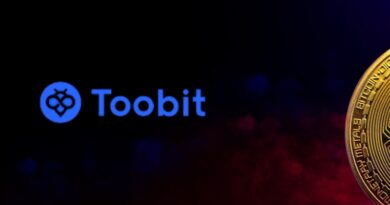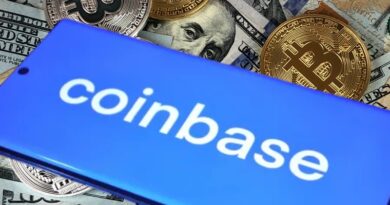Namecoin Celebrates 13 Years as First Altcoin With Strong Hashpower
When people think about cryptocurrency, Bitcoin is usually the first name that comes to mind. But did you know that Namecoin was the first-ever altcoin? It launched in 2011—just two years after Bitcoin—and it’s still going strong today.
Let’s take a closer look at Namecoin’s journey, what makes it unique, and why it remains relevant in the fast-moving world of crypto.
What Is Namecoin?
Before getting into the history, let’s clarify what Namecoin is. Simply put, Namecoin is a decentralized platform built on Bitcoin’s code. It’s not just another digital currency—it was designed to solve a specific problem: censorship on the internet.
It allows users to register and manage domain names using .bit instead of .com or .org. Unlike traditional domain names, Namecoin domains live on a blockchain. That means no central authority can take them down or block them.
Think of it as an alternative version of the internet—one that gives people more control over their online identity and freedom of speech.
Key Features of Namecoin
- Decentralized Domain Names: No single company or government can control or censor websites.
- Built on Bitcoin’s Code: Shares Bitcoin’s strong foundation and uses similar technology.
- Merge Mining: Uses Bitcoin’s hashpower for added security without needing a separate network.
- Supports Identity Applications: Offers decentralized identity systems like the “id” namespace.
The Origin Story: Why Namecoin Was Created
Back in 2010 and 2011, the Bitcoin community was buzzing with ideas. One of the early concerns was about internet freedom. Could Bitcoin’s technology do more than just handle money?
A developer named Vincent Durham (better known by his screen name, Vinced) had an idea. He realized the same technology that powers Bitcoin could also manage domain names. This inspired the creation of Namecoin.
When Namecoin launched in 2011, it became the world’s first altcoin—short for “alternative coin.” That means every other cryptocurrency besides Bitcoin owes at least some of its existence to Namecoin.
13 Years Later: Why People Still Use Namecoin
You might wonder, “If Namecoin is so old, why does it still matter today?” Fair question. Most early crypto projects have faded away. But Namecoin has stood the test of time—and here’s why:
- It Solves a Real Problem: Unlike most coins that just mimic Bitcoin, Namecoin offers utility—uncensored domain names and digital identity.
- Secure Mining: Through a process called merge mining, Namecoin shares Bitcoin’s massive computing power. That adds serious security without needing its own giant mining network.
- Community Support: Developers have stayed committed. Open-source contributors have kept the project alive and functional.
Think of it like a vintage car that’s still running while others have rusted away—it may not be flashy, but it gets the job done.
Understanding Merge Mining: What Makes It Work
Merge mining might sound complicated, but the idea is pretty simple.
Imagine you’re mining Bitcoin—you’re spending electricity and computing power to validate new transactions. With merge mining, that same effort can also be used to mine Namecoin at no extra cost. It’s a two-for-one deal.
This means miners don’t have to choose between mining Bitcoin or Namecoin. They can do both, boosting Namecoin’s network security without extra strain.
As of now, more than 90% of Namecoin’s mining power comes directly from Bitcoin miners. That gives it extremely strong protection against attacks or security breaches.
A Look Back: Namecoin’s Milestones
Let’s walk through some key events in Namecoin’s journey so far:
- 2011: Namecoin launches as a Bitcoin fork, aiming to decentralize domain names.
- Early Days: Introduced the .bit domain extension and the id/ namespace for digital identities.
- 2011 Onward: Becomes the first project to use merge mining with Bitcoin, a major breakthrough.
- 2020s: Development slows but doesn’t stop. Quietly maintains operations and continues merging with Bitcoin hashpower.
- 2024: Celebrates its 13th anniversary with hashpower levels as high as ever—still protecting its users and the .bit network.
The Importance of Uncensorable Domains
Have you ever heard of a website being taken down because of what it says? It happens more than you probably realize. From activists to independent journalists, people face digital censorship all around the world.
Namecoin offers a way around that. With a .bit domain, your website lives on a decentralized system. No company or government can block it, delete it, or take it offline.
That’s powerful. And it gives people a voice—even in places where free speech is limited.
So Why Haven’t .bit Domains Gone Mainstream?
Good question. Part of the issue is awareness. Most people just don’t know this option exists. Other reasons include:
- Browser Support: Most regular browsers don’t support .bit domains out of the box.
- Setup Difficulty: You need a Namecoin wallet and some special configurations to register or visit .bit sites.
- Limited Adoption: Businesses haven’t widely adopted .bit yet, so it’s still a niche tool.
Still, for those who value privacy, freedom, and open internet access, Namecoin offers solutions worth exploring.
What Can You Do With Namecoin?
You might be wondering—how can I use Namecoin today?
Here are four practical ways:
- Register a .bit domain: Claim your own decentralized website name. Use it for blogging, activism, or private communication.
- Protect your online identity: Create an identity in the id/ namespace. This gives you a cryptographic handle online, free from central control.
- Support free speech: Use Namecoin tools to host uncensorable content, independent of local laws or ISPs.
- Experiment with tech: If you’re a developer or hobbyist, you can use Namecoin in conjunction with Tor or IPFS for complete anonymity and decentralization.
Final Thoughts: Why Namecoin Still Matters
In a world filled with thousands of cryptocurrencies, Namecoin shows us that simple, clear missions can stand the test of time. It’s not trying to be everything. It sticks to the basics: digital identity and freedom of speech.
Even after 13 years, Namecoin remains one of the most secure and focused crypto networks in existence—thanks in large part to its smart use of merge mining and consistent community effort.
So, is it the flashiest token out there? Not really. But it’s quietly doing what it set out to do—give people control over how they show up online. And that’s something worth celebrating.
Curious to Try It Yourself?
If you’re interested in privacy and decentralization, Namecoin is worth a closer look. It’s not as user-friendly as mainstream platforms, but it offers unmatched freedom.
Who knows—maybe your next website won’t be www.example.com, but example.bit.
Thoughts? Would you consider switching to a decentralized domain? Let’s talk.









